Introduction
Imagine, WW2 without the use of the atomic bomb, the Jet Age being expediated by the ongoing war in Japan, aircraft industries adapting and expanding on existing designs to incorporate more and more powerful engines etc.
The Halocene line of RJ aircraft started out as a ground attack type but evolved to fullfil a number of roles, with the need for a long range jet bomber to serve in the Pacific theatre the decision was made to incorporate some looted technological advances from the defeated Geman war machine and companies like Arado.
The Halocene B3 included:
* an increased fuselage length (both infront and behind the CofG,
* replacement of piston engines with 4no. jet engines,
* redesigned main undercarriage to locate it within the fuselage
* addition of guided glide bombs and their bomb aiming positions
* different fin arrangement
Controls
AG1-2 = start engines
AG3-4 = drop aimed glide bombs (see sequence detail)
AG6 = fold wings (for storage purposes only - aircraft is now too long for carrier ops)
AG7 = autolevel system
AG8 = disable aircraft pitch / roll
Bombing sequence
The two glide bombs are on an automated sequence linked to the bomb bay doors, bomb swing and bomb release. Firstly use AG7 to level the aircraft, AG8 to stop bomb controls from affecting the mothership, choose which weapon you want to use (AG3 = front bomb, AG4 = rear bomb), select the appropriate camera, press AG3 (or AG4 if you want), pitch and roll controls the bomb after release, glide it to your target and boom. Rinse and repeat for the other bomb as required.
Pictures
On the ground in the Pacific theatre

Rotation on takeoff

Gear retracting (and sequenced doors)

Glide bomb bay doors open and bomb swung down

Bombs away (and being guided towards the target)

Specifications
General Characteristics
- Predecessor 24th January 2021 RJ Halocene B1 9.8
- Created On Windows
- Wingspan 55.3ft (16.8m)
- Length 65.8ft (20.1m)
- Height 20.7ft (6.3m)
- Empty Weight 70,141lbs (31,815kg)
- Loaded Weight 89,713lbs (40,693kg)
Performance
- Power/Weight Ratio 0.751
- Wing Loading 103.0lbs/ft2 (502.9kg/m2)
- Wing Area 871.0ft2 (80.9m2)
- Drag Points 3998
Parts
- Number of Parts 934
- Control Surfaces 2
- Performance Cost 3,382


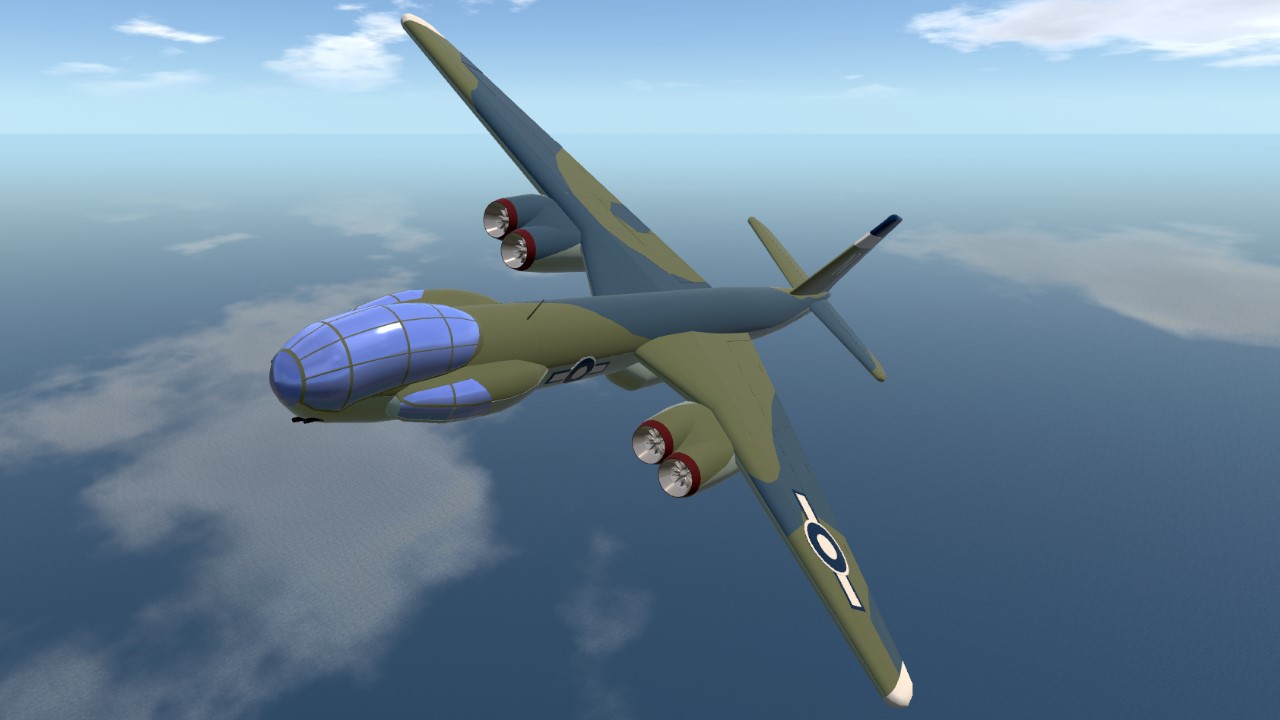
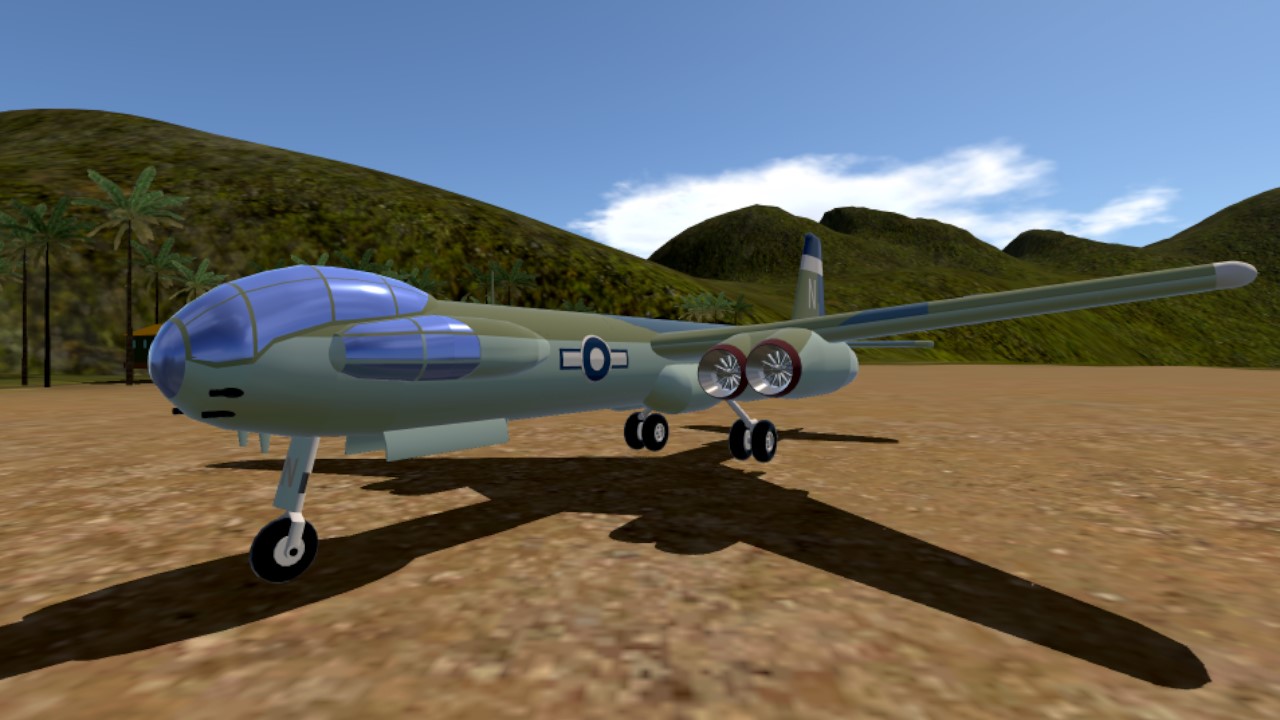
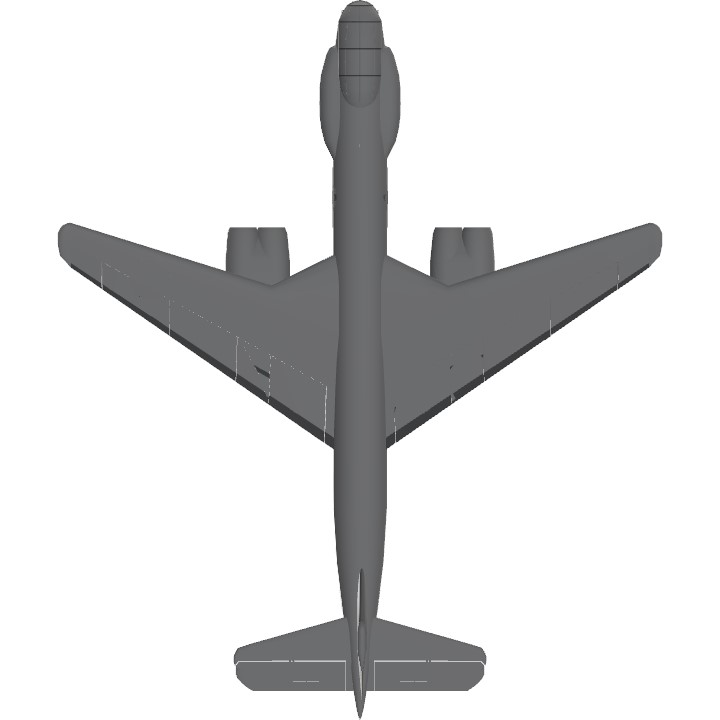
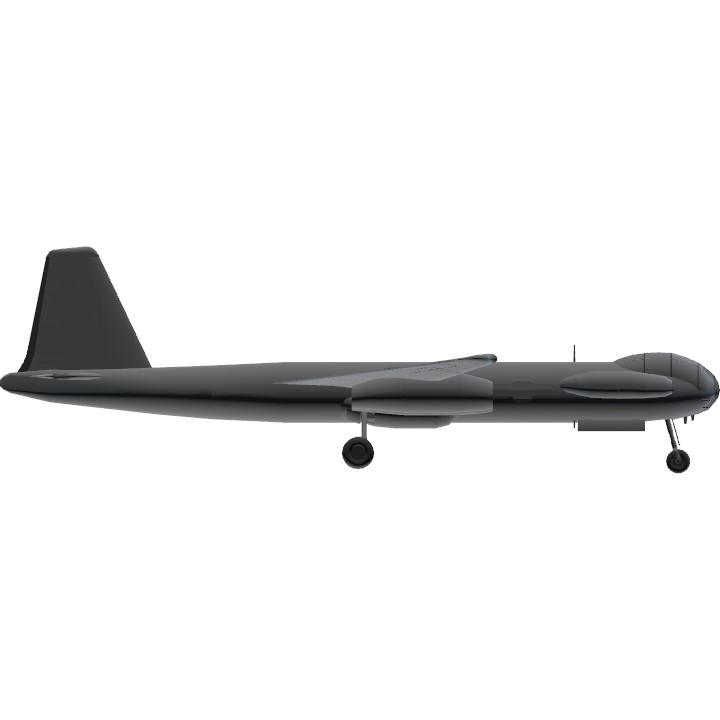
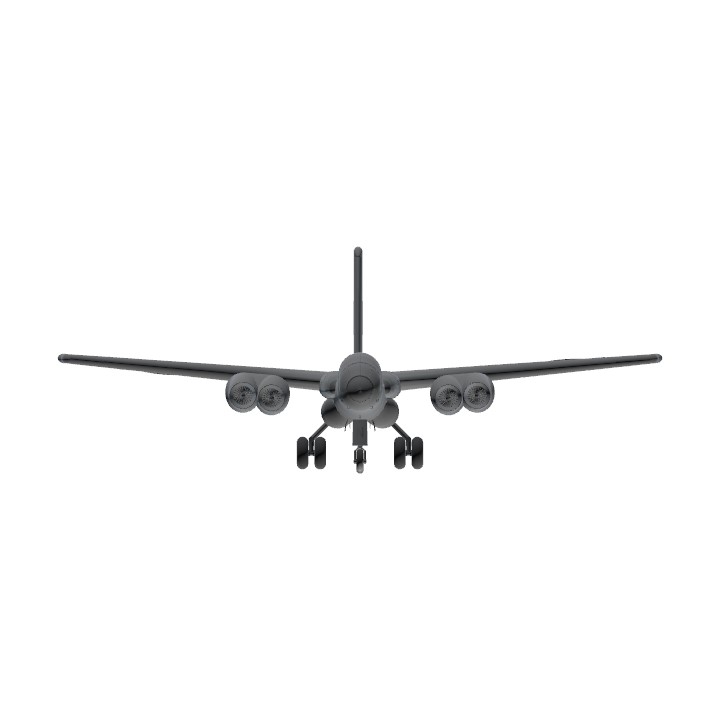
@RamboJutter
First thing first, a Mustang isn't a British design either - it's an American one that just happen to function better with British engines than their homegrown counterparts. Plus, a P-51 fin flares out at its base at the leading edge, while the Halocene's flares out at the trailing edge... and TBPH the Supermarine Attacker looks much closer to a British-built "jet P-51".
.
Plus, a trapezoidal fin (or a triangular tailplane) does not as readily identify an airframe's lineage (especially because the Ju 287 had a very similar fin) as the shape of its engine nacelles and the canopy - and both are all German.
.
Seriously, this plane is a dead ringer for the Junkers/OKB-1 EF-131 sans the third pair of engines (preemptive apologies for not being able to find a good English source), which, given that IRL British post-war designs usually take a drastically different approach with a cylindrical cross-section, cigar-shaped outline, sharp nose, bubble canopy, and trapezoidal wings (see: de Havilland Vampire, Gloster Meteor, EE Canberra, Hawker Sea Hawk, and the aforementioned Supermarine Attacker; incidentally the Canberra looks like an overgrown Meteor) compared to their WWII counterparts, still look really out of place.
.
..
... and sorry for hogging the channel.
@ThomasRoderick I understand your logic and I can appreciate how you could find this out of place without many allied features (the fin is an enlarged mustang fin and the tail plane is I think from a typhoon or similar - I built this so long ago I can't remember now). However, if you imagine that Germany has been overthrown, all its existing surviving airframes were divided out and tested by the allies (Eric Winkle Brown flew a lot of them back to England) it didn't seem that big a stretch of the imagination to think that some of the more promising parts of the planes could be adopted / replicated by British aircraft companies into new designs for the continued war in the Pacific. That was my logic anyway :)
@ThomasRoderick jk
@ThomasRoderick wow that's lotta words to bad I'm not reading them
@Hahahahaahahshs
True, presumably just like how the XP-72 was a P-47 Jug with elements from captured Fw-190s, and the F-86 Sabre was a jet-powered P-51D Mustang (aka the FJ-1 Fury) with the wings of an Me 262, the OG Halocene B1 9.8 was probably a Mossie with a lot of elements from captured Ju 287 and Ju 288s... then the Halocene A2 11.6 variant incorporated some elements from both an He 219 and a B-26, and now apparently an Arado Ar 234C as well...
TL;DR: Incorporating elements from captured enemy planes is all well and fine, but a British designer building something without any British features but rather a mish-mash of Junkers, Heinkel, and Arado would probably be a bit out of place.
@ThomasRoderick capture plane
Beautiful as always! ... although... why does a supposedly British design have a Junkers' cockpit and an Arado's engine arrangement? Did RJ Ltd. collab with those two aircraft manufacturers after German surrender?